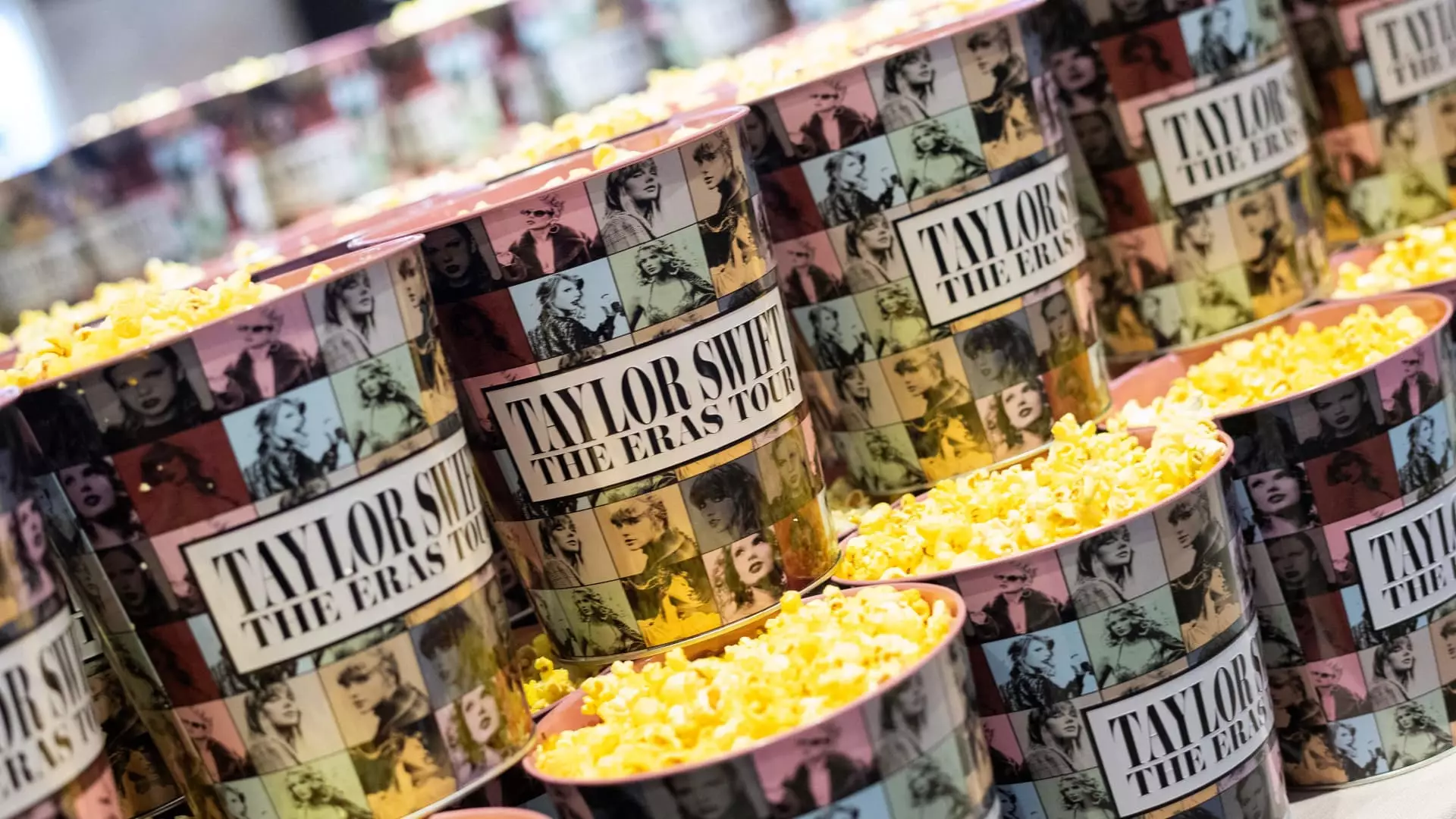For many, going to the movies is synonymous with indulging in buttery popcorn and soda—a timeless combination that enhances the cinematic experience. Yet, in recent years, a fascinating trend has emerged, one that has transformed not just how audiences enjoy their snacks but how theaters generate revenue. The humble popcorn bucket, traditionally a simple vessel for carrying kernels, has become a coveted collectible item. This shift from being an unremarkable accessory to becoming an object of desire illustrates a broader trend in the film industry that is seeking innovative ways to entice audiences back to theaters.
Historically, theater chains focused primarily on ticket sales and standard concession offerings. However, following the massive disruption caused by the COVID-19 pandemic, many chains recognized an urgent need to adapt. AMC Entertainment, for instance, embarked on a mission to market novelty merchandise that went beyond traditional fare. The endeavor began tentatively, with the company’s first major step being tied to a cultural phenomenon—the release of “Taylor Swift: The Eras Tour” movie. The immense popularity of custom popcorn buckets associated with this release not only delighted fans but also drove significant revenue, amounting to approximately $65 million in merchandise sales in just the last year.
In a bid to stimulate interest in cinema post-pandemic, theater chains like Cinemark, Regal, and B&B Theatres have jumped on the bandwagon of limited edition popcorn buckets, creating a sense of urgency and exclusivity around seeing major releases during their opening weekends. With movie attendance dwindling, particularly as audiences grew accustomed to at-home viewing options, this strategy has proven to be an essential tool in rekindling the public’s interest in movie-going.
The notion of eventizing cinema cannot be underestimated. B&B’s Paul Farnsworth pointed out that during the pandemic, many individuals fell out of the habit of attending movies. The introduction of unique popcorn buckets aims to provide viewers with not just a snack, but an experience—one that they can take home as a memorable keepsake. Patrons snapping selfies with these eye-catching containers enhances not only the social media presence of theaters, but also customers’ personal experiences, effectively blending consumption with personal enjoyment.
Furthermore, the emotional connection that consumers forge with limited-edition merchandise can result in significant financial gains for theater chains. Cinemark, for instance, saw remarkable sales with a specially designed bucket for “Scream VI,” showcasing how tapping into film-specific themes and aesthetics can generate substantial demand. This phenomenon of creating an experience that integrates social elements—be it through photography or shareable moments—has become essential in reviving interest in movie theaters.
The concept of limited-run merchandise is not new; theme parks have long relied on branded items to boost revenue. However, U.S. cinemas were initially hesitant to embrace this model, largely due to logistical problems like product fit within standard cup holders. As the popcorn bucket industry took off, innovative designs were introduced—such as the iconic R2-D2 bucket for “Star Wars: The Rise of Skywalker,” which sold out within days. This initial success paved the way for an explosion of creativity in bucket design.
A particularly interesting case study emerged with the recent “Dune: Part Two” popcorn bucket, which garnered attention not only for its unique design but for triggering a viral sensation on social media. As consumers rushed to secure their own versions, the scarcity created a phenomenon akin to ‘fear of missing out.’ Such demand dynamics demonstrate how merchandizing transcends barriers of conventional marketing and taps directly into cultural zeitgeist, as evidenced by collectors willing to pay upwards of $200 on platforms like eBay.
As theater chains engage in a friendly competition to innovate collectible items, collaboration with merchandise companies, like Zinc, has become pivotal. The rapid production of themed offerings plays a vital role in the success of these promotional efforts, and companies are continuously seeking to outshine one another in creating groundbreaking items that resonate with audiences on a personal level.
Looking ahead, blockbuster titles are set to dominate the box office, and with them comes a wealth of chances for unique merchandise. Films slated for release in 2025 and beyond offer rich opportunities for theaters to revisit their merchandise strategies, focusing on films with entrenched fan bases for guaranteed sales. Effective execution of these marketing strategies is crucial—without timely sales, the window of opportunity might close quickly.
The evolution of the popcorn bucket from a tasteless accessory to a sought-after collectible illustrates an innovative shift in the marketing landscape of cinema. As theaters continue to explore this trend, they are not only revitalizing sales but also meaningfully enriching the movie-watching experience in today’s diverse entertainment ecosystem.

